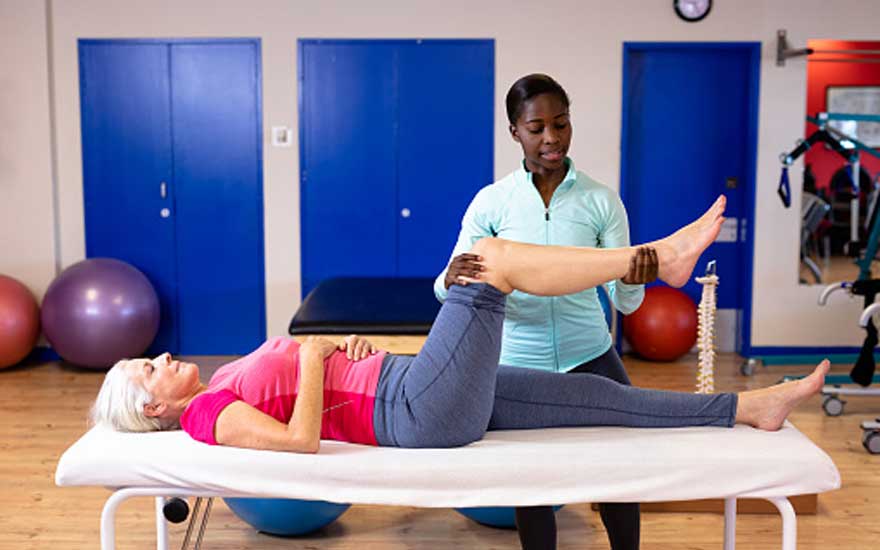
Osteoarthritis, or OA, is the most common form of arthritis. It affects over 32.5 million U.S. adults. OA is a degenerative joint disease causing pain and stiffness that can lead to limited function.
OA of the knee is the most common type, affecting more than 12 million Americans ages 65 and older. The signs and symptoms of OA can vary. They commonly include joint stiffness, pain during activity, and cracking or creaking noises around the joint.
“Although there is no treatment that can reverse OA, physical therapy can help individuals manage the symptoms conservatively through appropriate and individualized exercise programs and other treatments provided by physical therapists,” said Rachel Prusynski, PT, DPT, PhD, a spokesperson for the American Physical Therapy Association. “Physical therapy may also help to prevent a worsening of OA and the need for invasive procedures and prescribed pain medications.”
Backed by research. Many studies have shown that physical therapy is effective in helping manage OA. Now, a new report released by APTA provides another reason to choose physical therapy for OA of the knee over commonly used steroid injections — the overall value that physical therapy delivers to patients and the health care system. In addition to saving health care dollars, physical therapy helps patients increase mobility, balance, strength and flexibility, ultimately contributing to better health and lowering the risk of conditions that could require additional health care services down the road.
People with OA should increase their physical activity routines more gradually than those without OA and should avoid high-impact exercises (think jumping or pounding movements on the joints).
Prusynski suggests five ways to manage OA symptoms through movement:
- Regular physical activity can help maintain and improve movement and function, and reduce joint pain for people with OA. Physical therapists can prescribe a tailored, individual physical activity plan, which in addition to helping with OA symptoms, can also boost heart health and facilitate weight loss.
- Muscle strength training with exercises primarily aimed at the large muscle groups around the knee and hip joints. Muscle strengthening exercises include lifting weights or working with resistance bands.
- Low-impact aerobics activities put less stress on the joints and include brisk walking, cycling, swimming, water aerobics, light gardening, certain group exercise classes, and dancing.
- Balance exercises like walking backward, standing on one foot and tai chi are important for those who are at risk of falling or who have trouble walking. Having OA can increase your risk of falling, so it’s important to build your balance and strength.
- Flexibility exercises like stretching and yoga are important for people with arthritis to reduce muscle tension and strain. Yoga can be modified for those with arthritis. Some people with OA have joint stiffness that makes daily tasks difficult. Doing daily flexibility exercises helps maintain your range of motion so you can keep doing everyday things like household tasks, hobbies, and visiting with friends and family.
Physical therapists are movement experts. They improve quality of life through hands-on care patient education, and prescribed movement. They are important members of your health care team and often work closely with other health care providers, including your primary care physician. You can contact a physical therapist directly for an evaluation and treatment.* To find a physical therapist in your area, visit Find a PT.
*You do not need a referral to see a physical therapist in the United States. Your insurance policy, corporate policies, or state practice laws may still require a referral. Some states may limit the type or duration of treatment without a referral.


